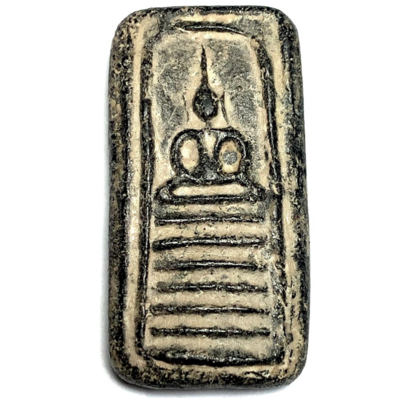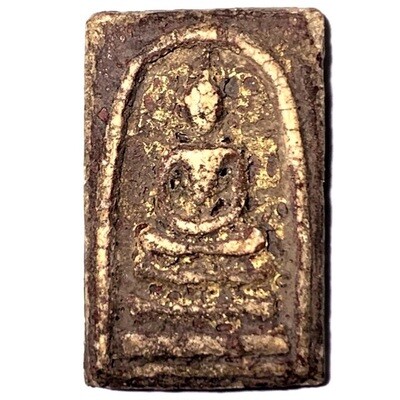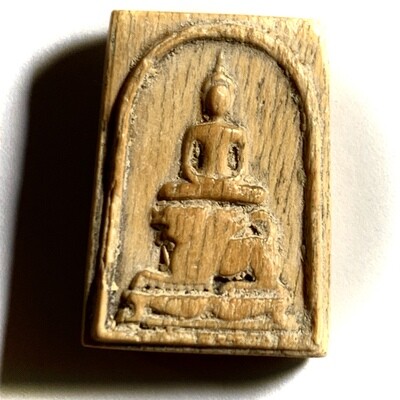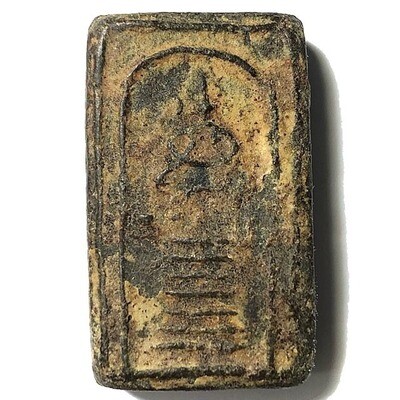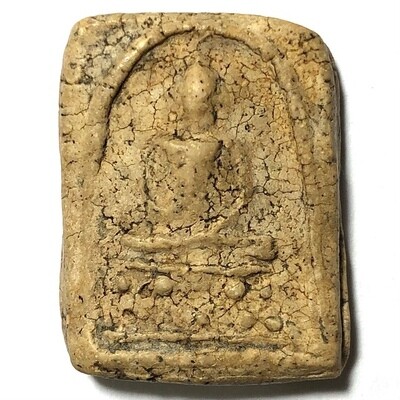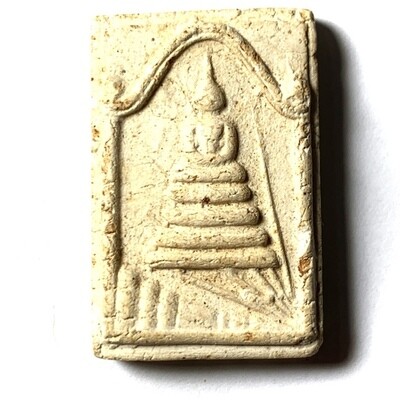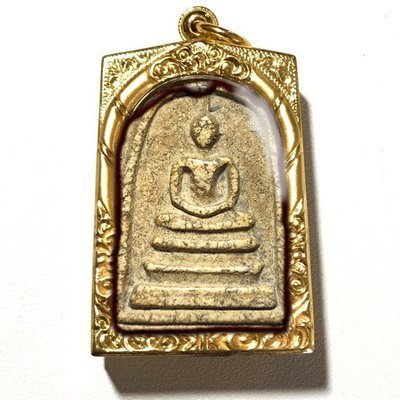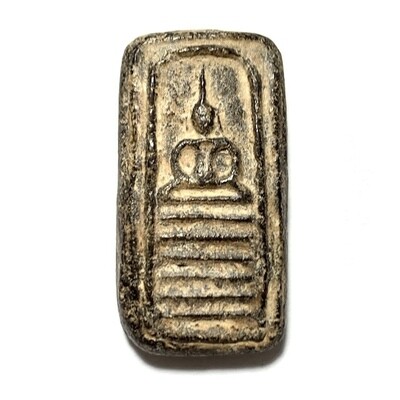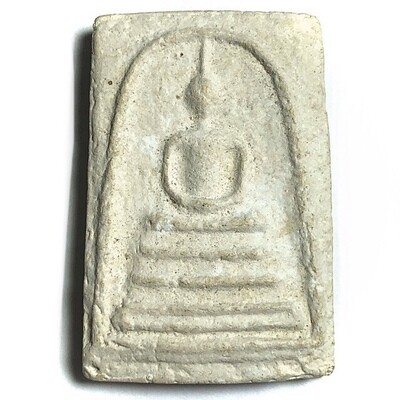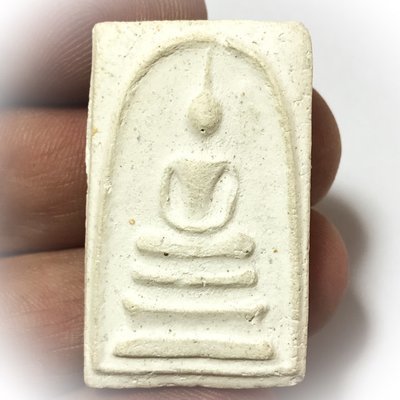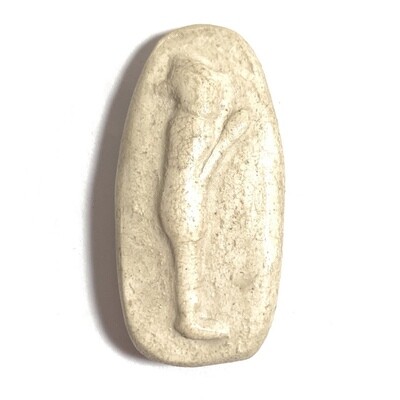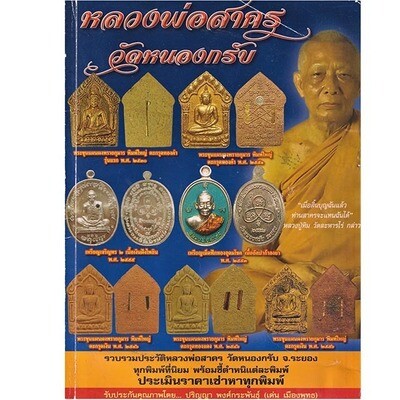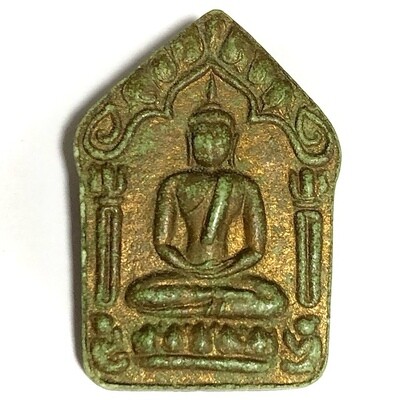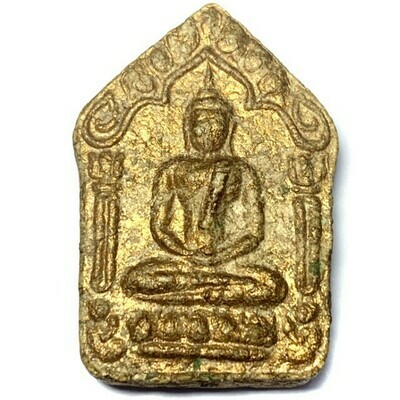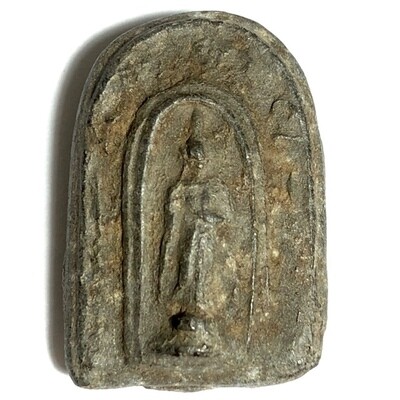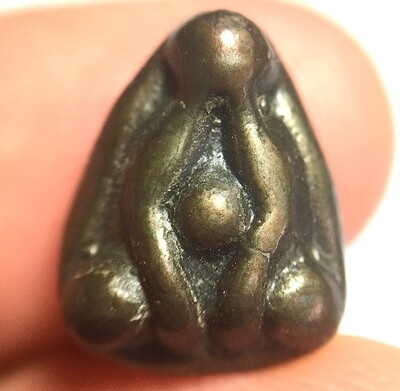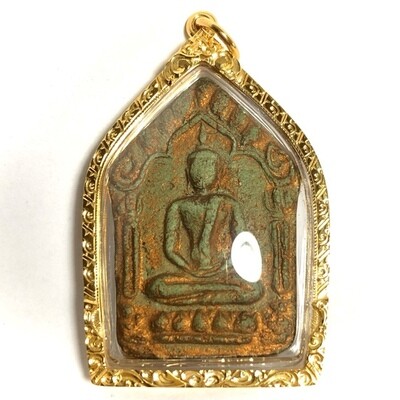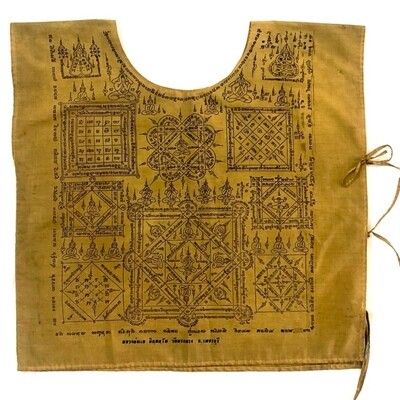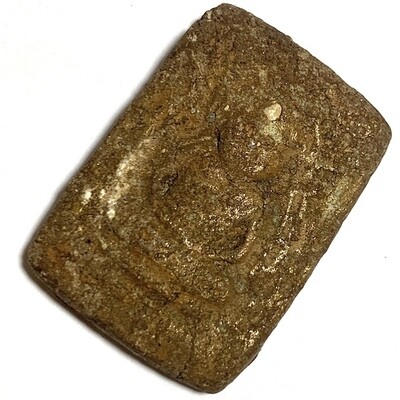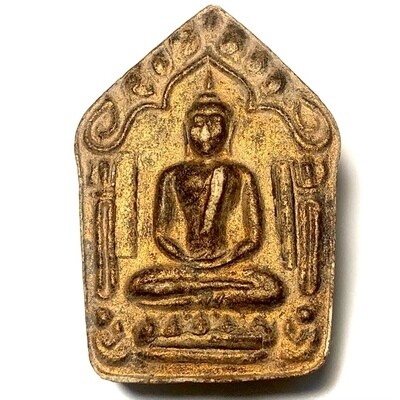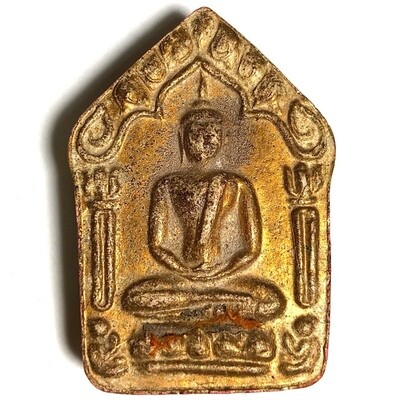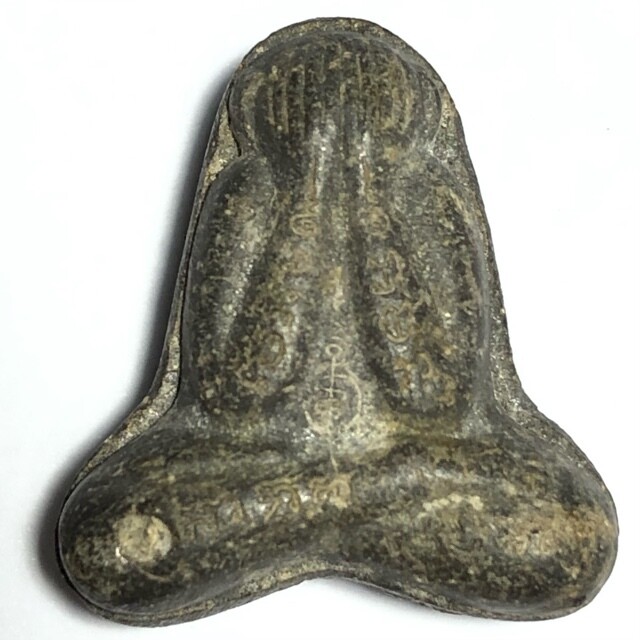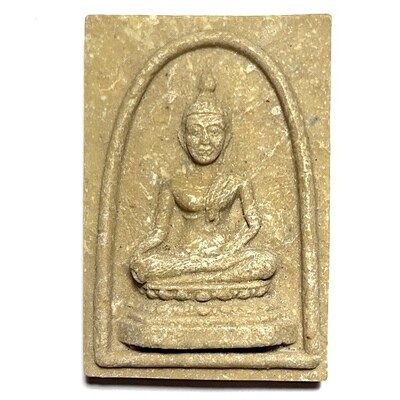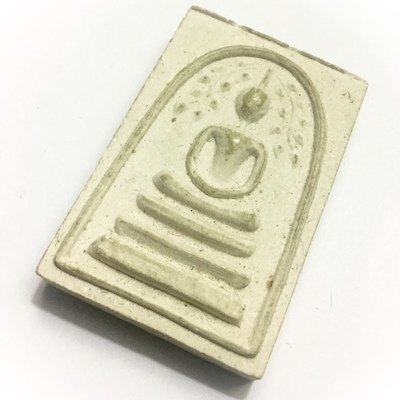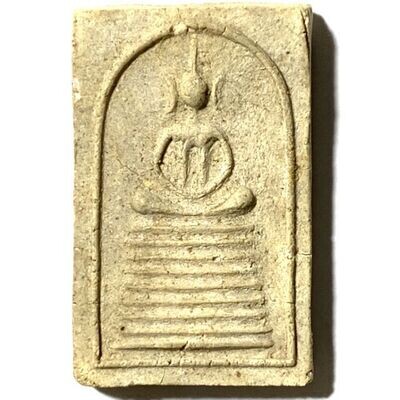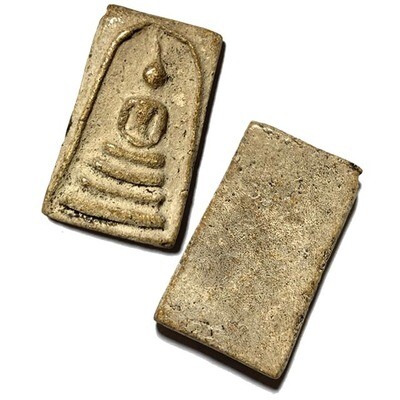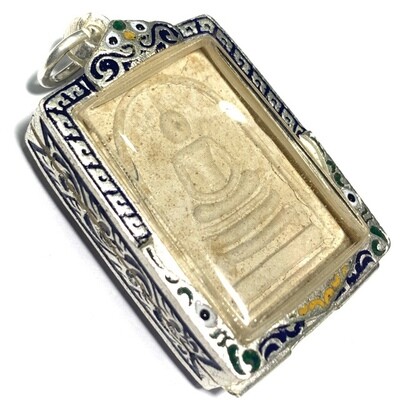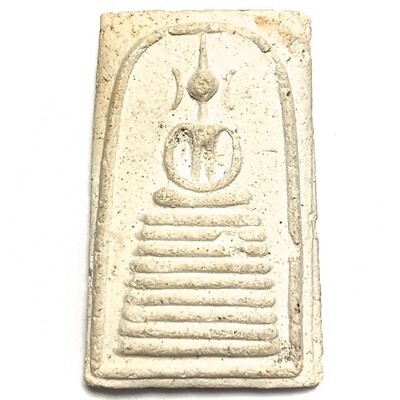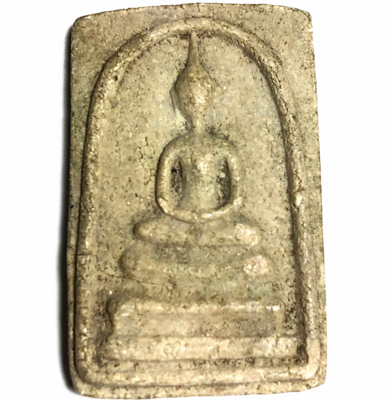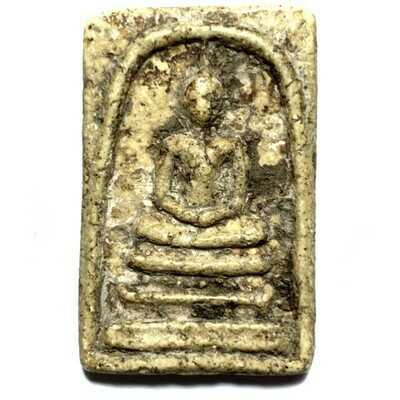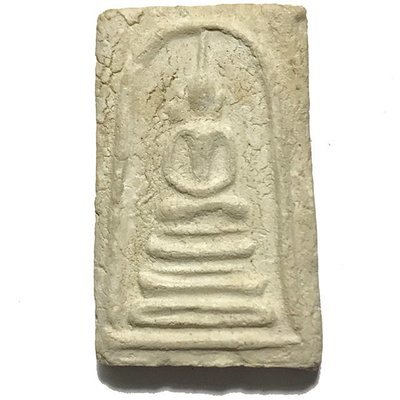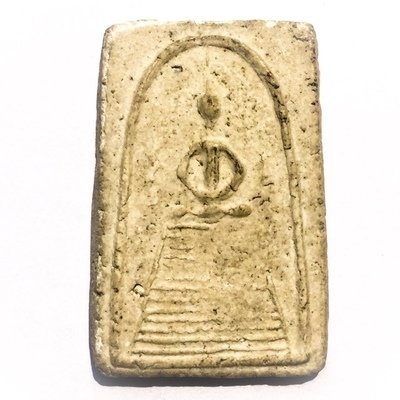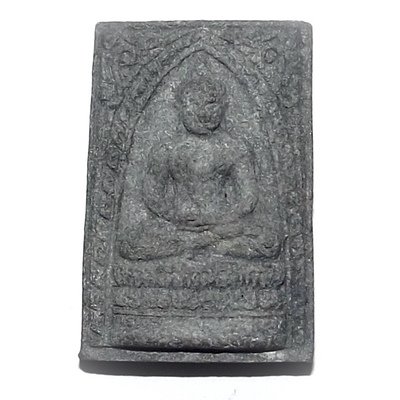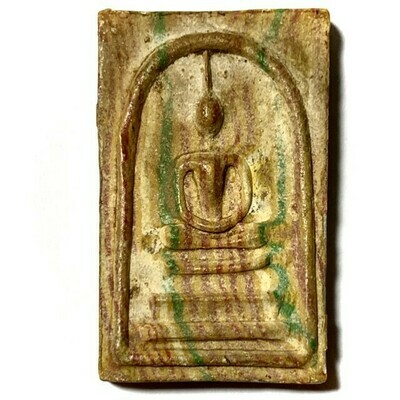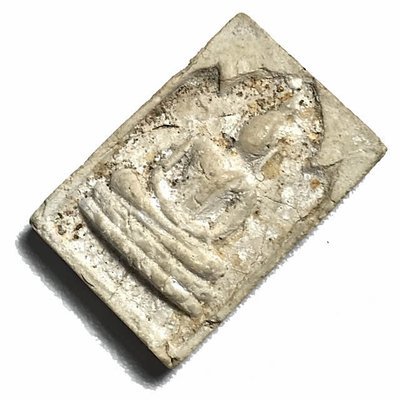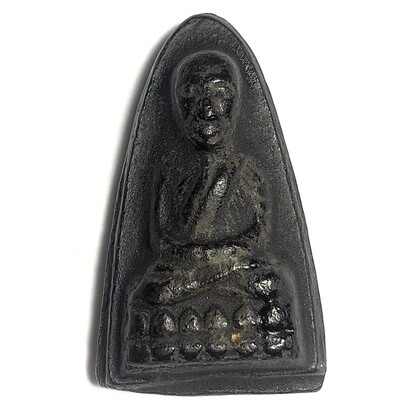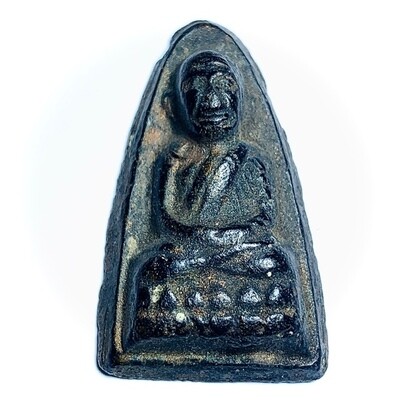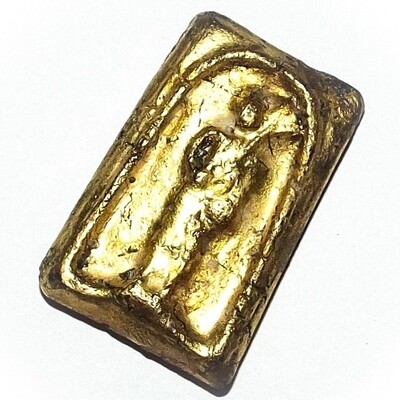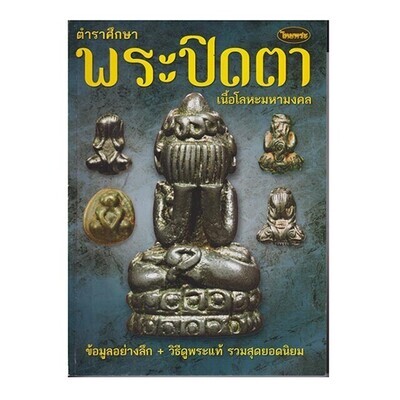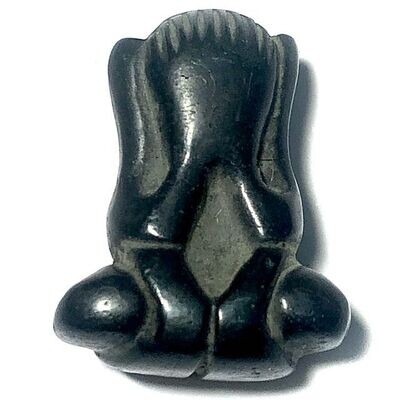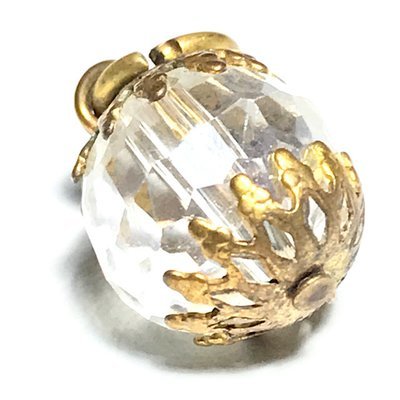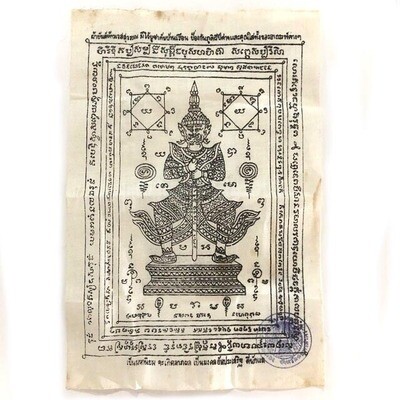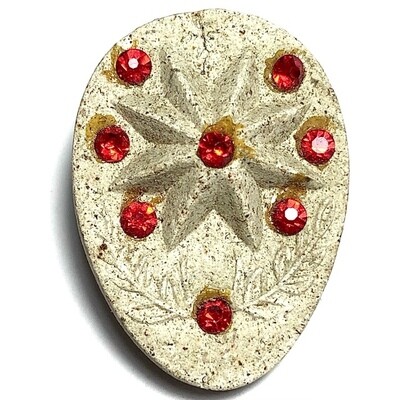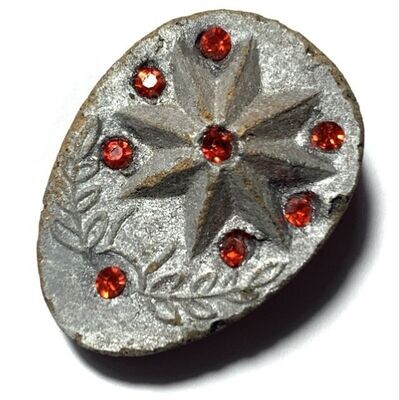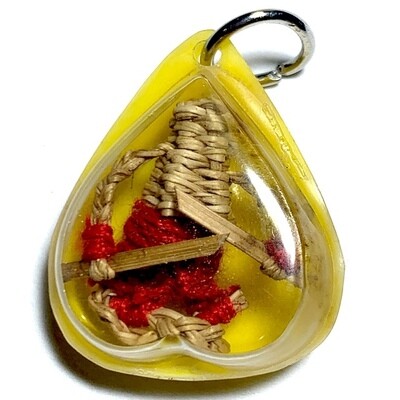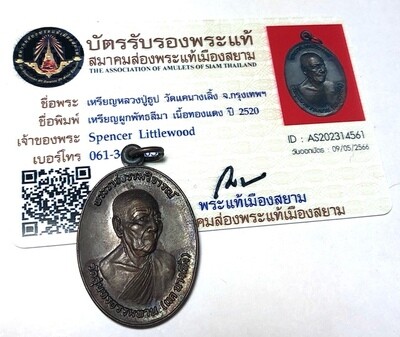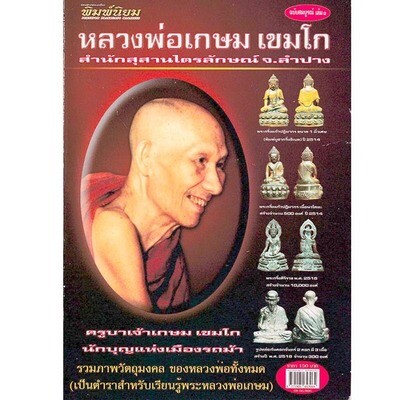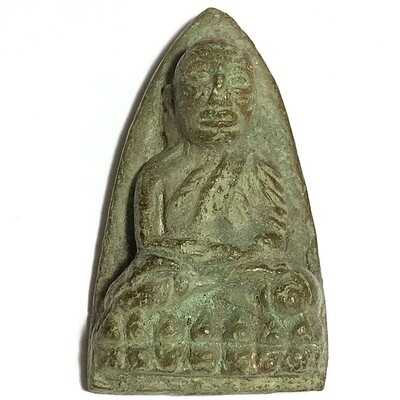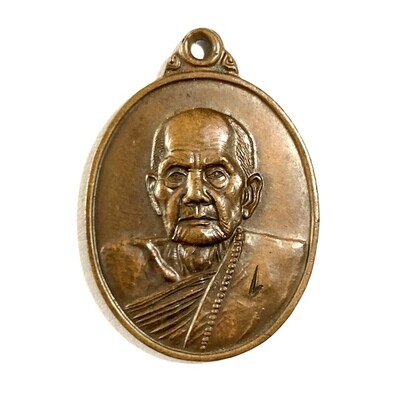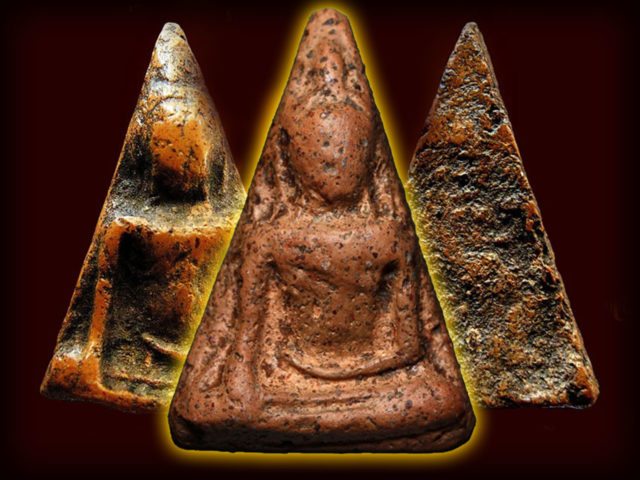
The Legend of Pra Nang Paya Amulet
Pra Nang Paya Benjapakee Amulet
Pra Nang Paya, or ‘Pra Pim Nang Paya, is an amulet from the Ayuttaya Period, which was artistically influenced in its design factors by the Artisans of the Sukhothai Periodic Style. As to the composition of the design of the Pra Nang Paya amulet, it can be said that it contains the work of the Sukhothai Artisan as its heritage, and is a Mark of Preservation of the Eight Periodic Buddhist Art styles found in Thai Sacred Arts and Amulets.
The Pra Nang Paya amulet was first discovered within the Chedi Stupa at Wat Nang Paya in Pitsanuloke, in the year 2444 BE, as King Julalongkorn Rama 5 was visiting Pitsanuloke, to be present for the casting of the Chinarat Replica Buddha at Wat Pra Sri Radtana Sasadaram. The King was invited to come and receive a large number of them as gifts (the best selected), and his Majesty then distributed them to the Government Officials and other Courtiers and Devotees. The remaining amulets, he took back to Bangkok. Apart from the ‘Serm Duang’ Horoscope Improving effects of this Purely Buddhist Amulet, the amulet is Famous for its Metta Mahaniyom, Klaew Klaad, Kong Grapan Chadtri, and Maha Lap powers.
The Pra Nang Paya Benjapakee amulet has 7 different Pim in total.
Pra Nang Paya Pim Khao Koeng.
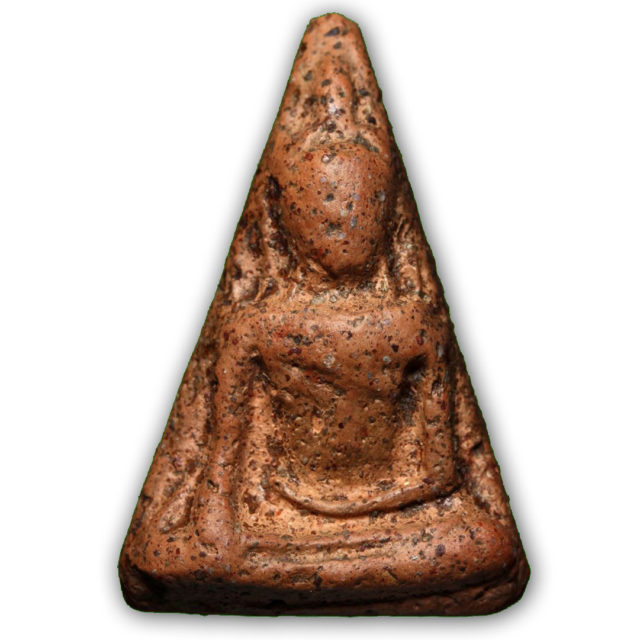
Pra Nang Paya Pitsanuloke Pim Khao Koeng Benjapakee Hiding Place Amulet
Pra Nang Paya Pim Khao Dtrong
(splits into two models; Khao Koeng Tammada, and Khao Koeng Mer Dtok Khaa).
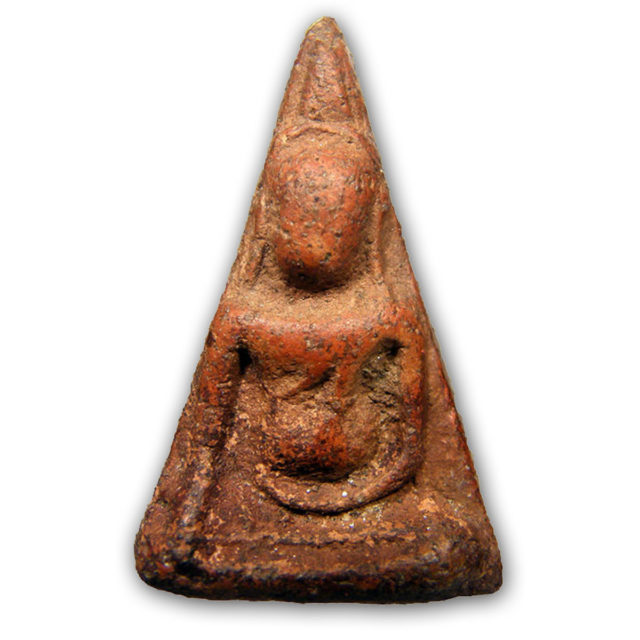
Pra Nang Paya Pitsanuloke Pim Khao Dtrong Benjapakee Amulet
Pra Nang Paya Pim Ok Noon Yai
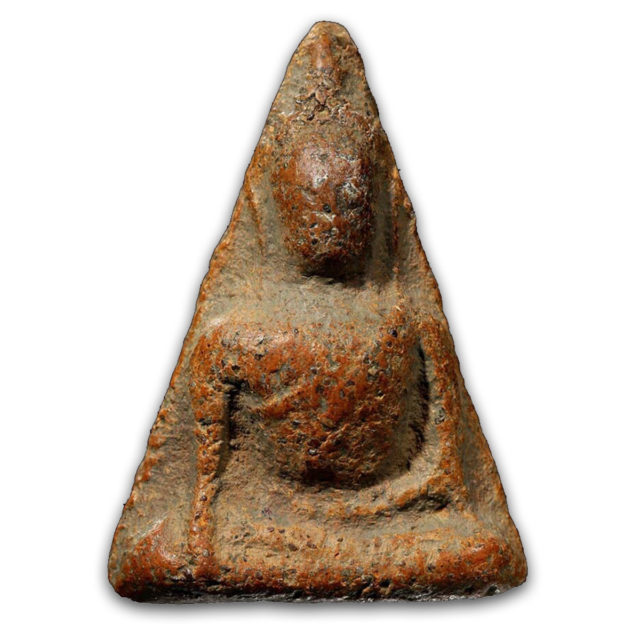
Pra Nang Paya Pim Ok Noon Yai Benjapakee Amulet – a Classic Pra Niyom Master Class Amulet
Pra Nang Paya Pim Ok Noon Lek.
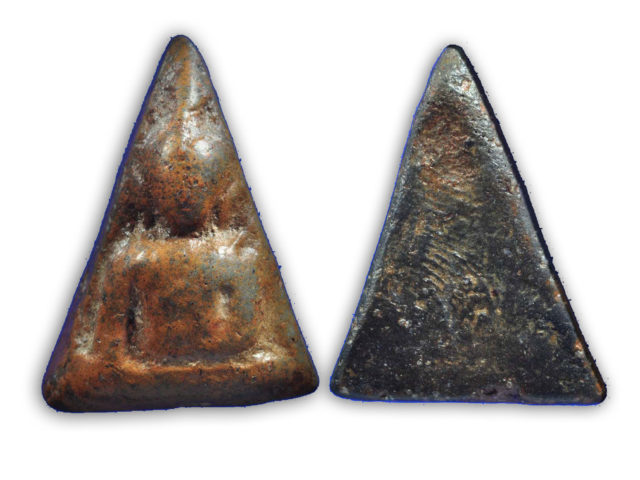
Pra Nang Paya Pitsanuloke Pim Ok Noon Lek Benjapakee Amulet of Historical Fame and Legend
Pra Nang Paya Pim Sangkati.
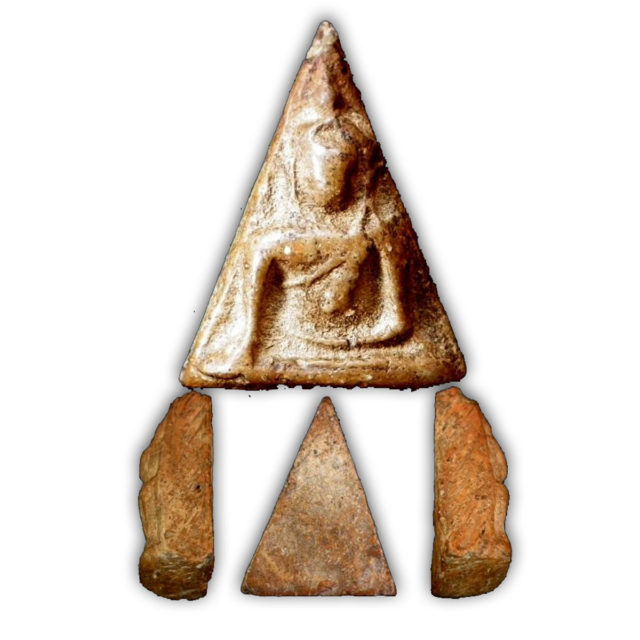
Pra Nang Paya Pitsanuloke Pim Sangkati Benjapakee Amulet – a very rare model to encounter from the seven Pim discovered in the Pitsanuloke Find
Pra Nang Paya Pim Ok Faeb also called ‘Pim Taewada’.
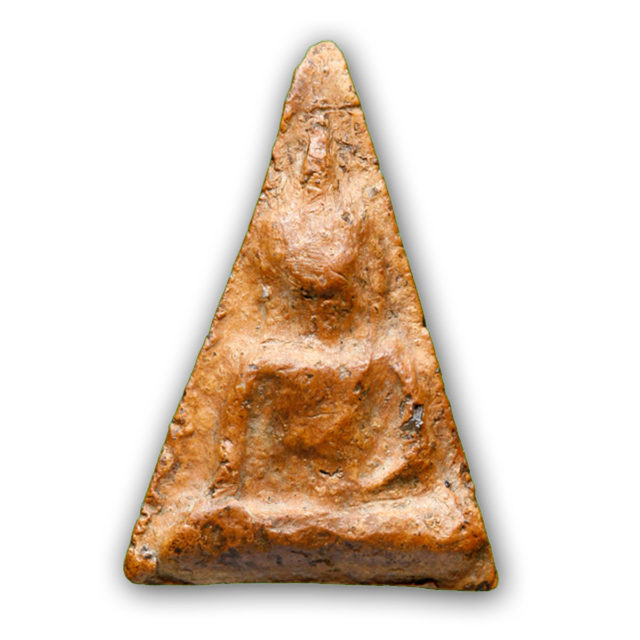
Pra Nang Paya Pim Tewada – a Classic Benjapakee Pra Niyom Master Class Amulet
Pra Nang Paya Pim Pised
(includes various amulets which do not fit in the above categories, such as the Khao Buang, or the Pim Yai Pised).
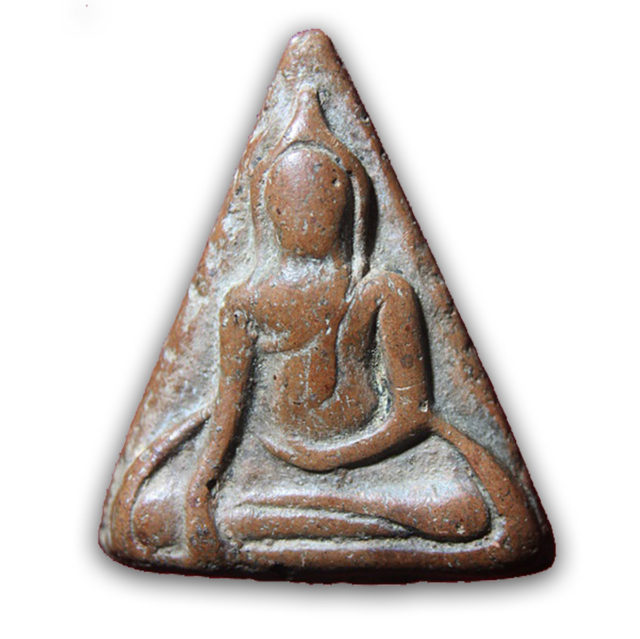
Pra Nang Paya Pim Pised Rare Special Model
Pra Pid Ta Nuea Bailan Pim Tok Rajah Wat Bang Sae 2540 with Certificate Por Tan Daeng (Luang Por Kron Lineage)
First edition certificated amulet of the Great Malaysian Monk Por Tan daeng, of Wat Koke Sai in Songkhla, this exhibit being the 1st edition 'Pim Wat Bang Sae' model, which emulates the style of the Pra Pid Ta of the Great Malaysian Monk Luang Por Tan Kron, of Wat Bang Sae. Released in the year 2540 BE, the amulet is made from Bailan Parchment powders, and is empowered with the ubiquitous Khom Aglkhara spells in ancient Khmer Sanskrit, used for the empowerment of this particular Wicha, used by Luang Por Kron for his Pra Pid Ta amulet.
Pra Kroo Aphai Sopon (Por Tan Daeng), of Wat Khok Sai, formerly the Abbot of Chana District, Songkhla Province, is a born indigenous citizen of Kelantan in Malaysia Por Tan Daeng is a direct disciple of Luang Por Kron, Bang Sae Temple, Malaysia. Por Tan Daeng has made many renowned and highly revered amulets over the years, which are all rare, due to him being the Looksit Aek first apprentice of the Great Luang Por Kron, and his Mastery of the continuance of the Magical Wicha of the Phra Pid Ta Wat Bang Sae (Malaysia)
The Pra Pidta Bang Sae, was made in various types of Muan Sarn Sacred Powders and Pim (models). They are considered powerful magical amulets, and a perfect alternative to the now almost impossible to find Pra Pid Ta of Luang Por Kron, as well as being considered beautiful pieces of miniature sacred art. The Pra Pid Ta Pim Wat Bang Sae is considered by aficionados to be worthy of collection, for the powerful consecration ceremony at Khok Sai Temple. There were many monks participating, including Por Tan Daeng, Ajarn Sri Ngern (abbot of Wat Don Sala), Por Tan Khun Thong, and Luang Por Sukh of Wat Duyong, Por Tan Chin of Wat Mueang Yala, Luang Por Hwaan, and many Khao or Master Monks from the Southern Provinces to attend.
Now he has passed away. He is a monk who is very worthy of worship. He was a straight-talking person who didn't mince words. He was diligent and strict in his ceremonies, whether it be during ordination or for rituals. Por Tan Daeng was also a preceptor (Upachaya Ordaining Officer). preceptors are specially entitled monks who are allowed to ordain others at their discretion.
Por Tan Daeng is known for his diligence and strictness in who he allows to ordain as a Monk, for he looks into the hearts of the disciple for his reasons for ordination, and protects the Buddha-Sasana (Buddhism), from losing its purity in the clergy, by preventing those with false intent to ordain, and only allowing those whose intentions are true to pass through the rite of ordination. To do this, they must practice and remain at the temple in white clothing as a lay practitioner for quite a time before they prove their worth. Por Tan Daeng is considered the Lineage Continuance Master of Luang Por Kron, of Wat Bang Sae, and hence is the Sentinel for the furtherance of the Wicha Pra Pid Ta of Wat Bang Sae, began by Luang Por Kron.
About Luang Por Kron;
Luang Por Kron, was not called so by Malays, as we call him in Thailand, rather, was named ‘Tok Raja’, which means ‘ as equal to the Sangha Raja’ The reason for this comes from a legend that the daughter of a powerful Sultan of Kalantan was cursed with a black magic spell, which caused his mind to become strangely affected, and even doctors and psychologists could not help to cure him, and even the Muslim witch doctors could not break the spell with their magic.
But Luang Por Kron was able to heal her, and return her to sanity. This caused LP Kron to recieve great respect from the Sultan who then gave him the honorary name of Tok Raja. His most preferred amulets are Pra Pid Ta Nuea Pong Kluk Rak, and the Rian Roop Dork Jik coin amulet.
Pra Pid Ta amulets, as well as Pra Pid Ta in form of Pha Yant, and Bucha statues, have been produced as objects of reverence and protection since very ancient times in Thailand. The artisans of that time created various styles and interpretations using the various periodic influences of Buddhist art and sculpture available at the time. Varios Deity forms were used to make the Pid ta posture (‘Pid Ta’ means ‘covering the eyes’) – various Buddhas or Bodhisattvas or Deities are fashioned into the posture of Pra Pid ta, or Pid Tawarn (meaning ‘closing the orifices). Pid Tawarn can close 7, or 9 orifices (seven being called ‘Pra Pid Sadtatawarn’ and nine being called ‘Pra Pid Navatawarn’).
The Pra Pid Ta is considered to be an amulet with ‘Maha Ud’ and ‘Kong Grapan’ power (invincibility and gunstopping power), but is also made as a wealth bringer, in which case, the amulet will be called ‘Pra Pid ta Maha Lap’. In order to inflect a greater resonance for wealth attraction and auspicious blessings, in addition to the Maha Ud and Kong Grapan magic, ancient artisans sometimes would use the image of the Sangkajjaiyana Buddha of riches and happiness, and carve it in the Pid Ta posture.
